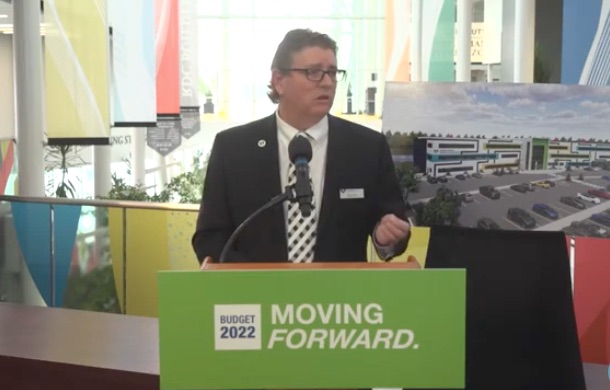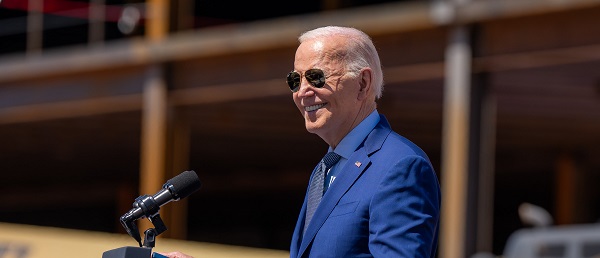Alberta
Province steps in to break the cycle of child abuse in Central Alberta

Supporting vulnerable children in central Alberta
Alberta taxpayers are spending $3.4 million to help build a new Central Alberta Child Advocacy Centre (CACAC) in Red Deer to provide services to vulnerable children and youth.
CACAC will advocate for and provide services to children facing child abuse and mental health issues. Alberta’s government has approved a land lease between Red Deer Polytechnic and CACAC for about one acre, where a new facility will be located.
Quick facts
- The total project cost for the new Central Alberta Child Advocacy Centre is $22.4 million. This includes $19 million in donor funding and equity and $3.4 million from the Alberta government, which will be used to connect utility lines to service the land.
- Alberta’s government approved the lease of land from the Red Deer Polytechnic under a 50-year lease agreement at $1 per year.
- The Central Alberta Child Advocacy Centre will construct and operate the new centre.
“Child abuse has no place in our province and Alberta’s government is committed to keeping vulnerable children safe. Through this unique project, we will provide a mix of social and justice services to ensure we support victims, prosecute offenders and deliver critical mental health supports.”
This is the first successful project approved through the government’s unsolicited proposals framework. The framework provides a pathway for private sector organizations like CACAC to bring government investment ideas and/or innovative technologies. The goal is to provide public infrastructure, including social service facilities, highways, public transportation, health clinics, schools, housing, agriculture and irrigation systems.
“We are keen on supporting any viable project put forward by the private sector to help ensure Albertans get the infrastructure they need. The new Central Alberta Child Advocacy Centre is a tremendous example of what can be achieved when we collaborate. Together, we can build communities, boost economies, support jobs and provide critical services to vulnerable Albertans.”
“The new Child Advocacy Centre will provide a host of opportunities for post-secondary students in both child care and children services. Through work-integrated learning opportunities, we are providing employers with access to new talent while preparing for Alberta’s economic recovery and aligning educational outcomes with labour market needs.”
“Together with Alberta’s government, we’re bringing to life a one-of-a-kind model in Canada. This funding announcement affirms that our government leaders are declaring that children who risk coming forward need all the help we can muster. They are acting so that victims of child abuse and those facing mental health issues find the very best supports at what could be their most vulnerable time.”
Alberta
Owner sells gas for 80 cents per litre to show Albertans how low prices ‘could’ be

Undoubtedly some of the motorists driving past The Whistle Stop Cafe at Mirror on Tuesday morning thought it was an April Fools prank. It wasn’t.
Chris Scott, owner of the gas station at The Whistle Stop Cafe offered a one day promotion on April 1st. Scott sold 8000 litres of regular gasoline for $0.80/ litre.
The promotion was funded by Scott and the Alberta Prosperity Project. In this video posted to his social media, Chris Scott explains why they did it.
Alberta
The beauty of economic corridors: Inside Alberta’s work to link products with new markets

From the Canadian Energy Centre
Q&A with Devin Dreeshen, Minister of Transport and Economic Corridors
CEC: How have recent developments impacted Alberta’s ability to expand trade routes and access new markets for energy and natural resources?
Dreeshen: With the U.S. trade dispute going on right now, it’s great to see that other provinces and the federal government are taking an interest in our east, west and northern trade routes, something that we in Alberta have been advocating for a long time.
We signed agreements with Saskatchewan and Manitoba to have an economic corridor to stretch across the prairies, as well as a recent agreement with the Northwest Territories to go north. With the leadership of Premier Danielle Smith, she’s been working on a BC, prairie and three northern territories economic corridor agreement with pretty much the entire western and northern block of Canada.
There has been a tremendous amount of work trying to get Alberta products to market and to make sure we can build big projects in Canada again.
CEC: Which infrastructure projects, whether pipeline, rail or port expansions, do you see as the most viable for improving Alberta’s global market access?
Dreeshen: We look at everything. Obviously, pipelines are the safest way to transport oil and gas, but also rail is part of the mix of getting over four million barrels per day to markets around the world.
The beauty of economic corridors is that it’s a swath of land that can have any type of utility in it, whether it be a roadway, railway, pipeline or a utility line. When you have all the environmental permits that are approved in a timely manner, and you have that designated swath of land, it politically de-risks any type of project.
CEC: A key focus of your ministry has been expanding trade corridors, including an agreement with Saskatchewan and Manitoba to explore access to Hudson’s Bay. Is there any interest from industry in developing this corridor further?
Dreeshen: There’s been lots of talk [about] Hudson Bay, a trade corridor with rail and port access. We’ve seen some improvements to go to Churchill, but also an interest in the Nelson River.
We’re starting to see more confidence in the private sector and industry wanting to build these projects. It’s great that governments can get together and work on a common goal to build things here in Canada.
CEC: What is your vision for Alberta’s future as a leader in global trade, and how do economic corridors fit into that strategy?
Dreeshen: Premier Smith has talked about C-69 being repealed by the federal government [and] the reversal of the West Coast tanker ban, which targets Alberta energy going west out of the Pacific.
There’s a lot of work that needs to be done on the federal side. Alberta has been doing a lot of the heavy lifting when it comes to economic corridors.
We’ve asked the federal government if they could develop an economic corridor agency. We want to make sure that the federal government can come to the table, work with provinces [and] work with First Nations across this country to make sure that we can see these projects being built again here in Canada.
-

 2025 Federal Election2 days ago
2025 Federal Election2 days agoChina Election Interference – Parties Received Security Briefing Days Ago as SITE Monitors Threats to Conservative Candidate Joe Tay
-

 2025 Federal Election2 days ago
2025 Federal Election2 days agoFixing Canada’s immigration system should be next government’s top priority
-

 2025 Federal Election1 day ago
2025 Federal Election1 day agoPoilievre, Conservatives receive election endorsement from large Canadian trade union
-

 Bruce Dowbiggin2 days ago
Bruce Dowbiggin2 days agoAre the Jays Signing Or Declining? Only Vladdy & Bo Know For Sure
-

 2025 Federal Election2 days ago
2025 Federal Election2 days agoLondon-Based Human Rights Group Urges RCMP to Investigate Liberal MP for Possible Counselling of Kidnapping
-

 2025 Federal Election2 days ago
2025 Federal Election2 days agoRCMP Confirms It Is ‘Looking Into’ Alleged Foreign Threat Following Liberal Candidate Paul Chiang Comments
-

 Censorship Industrial Complex2 days ago
Censorship Industrial Complex2 days agoFrance condemned for barring populist leader Marine Le Pen from 2027 election
-

 Business1 day ago
Business1 day agoBiden’s Greenhouse Gas ‘Greendoggle’ Slush Fund Is Unraveling






